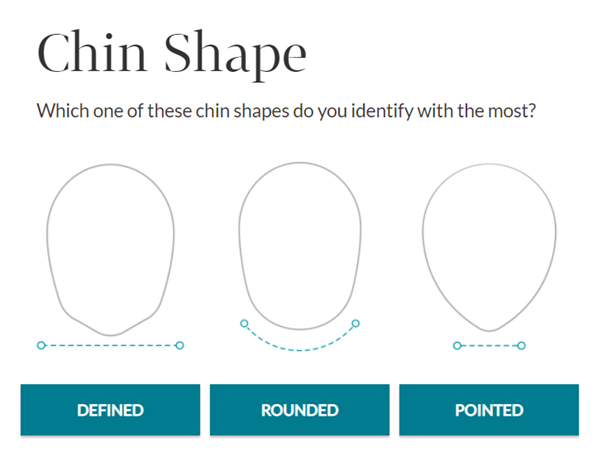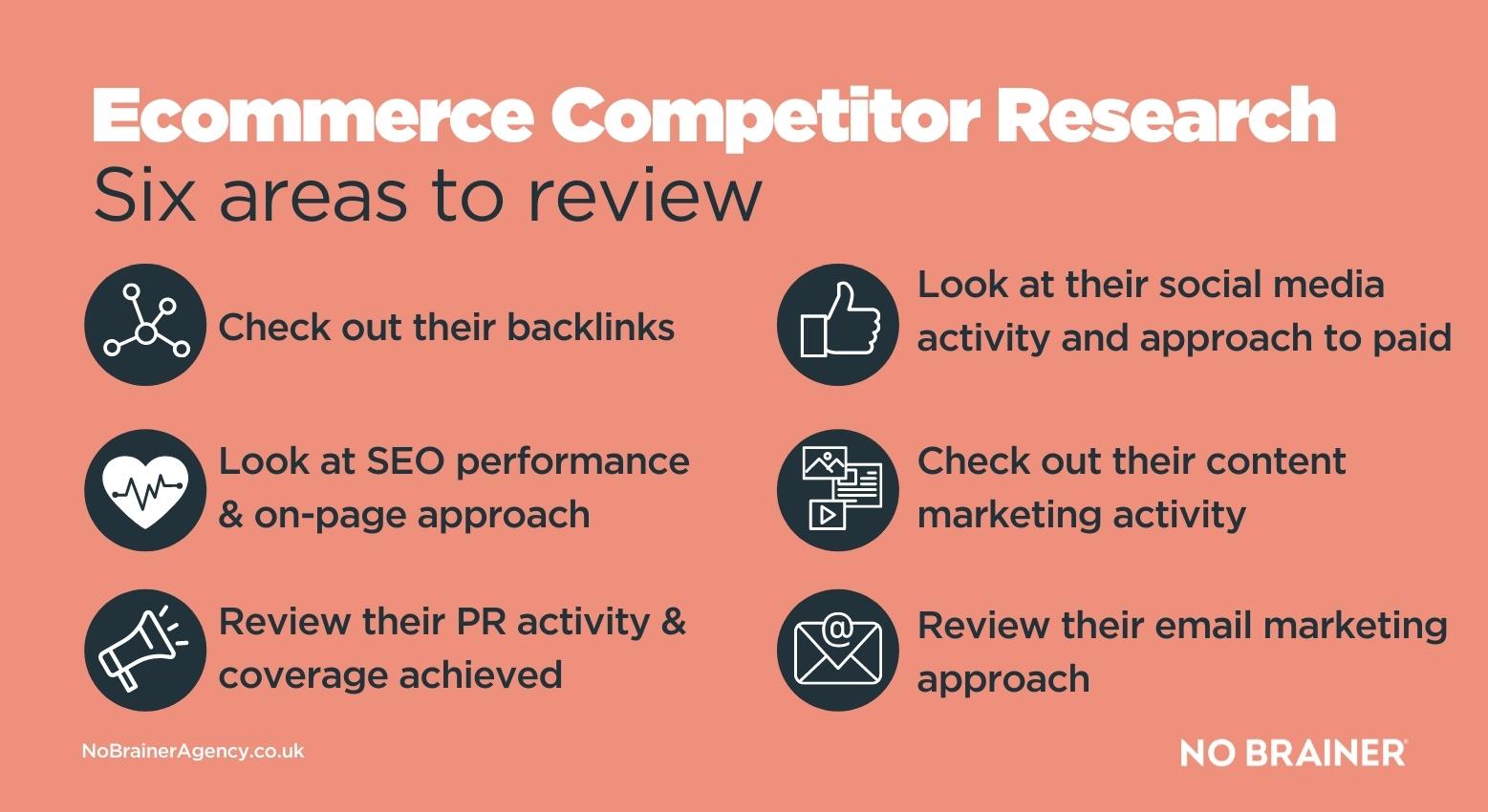There are lots of great reasons to keep an eye on what your ecommerce competitors are doing in terms of marketing activity, including to:




- Benchmark your and their online market positions
- Spark inspiration and ideas for your own strategy
- Learn from their marketing mistakes and successes
1. How do I find my competitors for ecommerce?
The answer to this question can vary, depending on your business objectives, but it’s recommended to look at other ecommerce brands that sell in the same space as you, both in terms of products and target audience. However, you should also take into account the specific channels that you’re planning to utilise and the size of business you are, and are looking to become. The chances are that you’re not going to be a direct competitor to Amazon, for example, despite the fact that they might dominate every marketing channel you want to target. Instead, look for ecommerce competitors that are a similar size to your business as well as some aspirational competitors for where you want to see your brand get to. For SEO, try Googling some of the keywords you’re targeting with your ecommerce site. Who ranks ahead of you in organic search results? Sometimes the results can be surprising, and it might flag some competitors that you weren’t previously aware of. Rather than making this a huge exercise and looking at 20+ competitors, it’s usually a better use of resources to keep the group fairly small. We recommend looking at 2-3 competitors of a similar size and stage of business, then a couple more aspirational ecommerce brands that can help you take a step up in your marketing strategy.2. Review their backlink profile
A growing backlink profile is important for SEO performance, so finding out which domains are linking to your competitors, and why, can help inform your own activity in this area, whether through digital PR, content marketing or other strategies. The easiest way to do this is by using a backlink analysis tool such as SEMrush, where you can directly compare backlinks pointing to several websites at the same time and find opportunities for your site to target. The links they have will also give insight into the types of activity they are doing e.g. links from news websites often indicate digital PR work, or are they guest blogging on relevant sites? Links from bloggers might show you what they are doing from an influencer marketing point of view too.
3. Review their organic keyword rankings and on-page elements
Exploring organic search rankings around your competitors and taking a look at their on-page SEO tactics and overall visibility can be a good guide to how you can catch up with and overtake them through your own ecommerce SEO strategy. Again, a tool like Semrush can help you do this very easily, along with alternatives like MOZ and Ahrefs. They all have specific competitive keyword analysis tools to help show you potential opportunities that your competitors aren’t currently focusing on, as well as showing some of the reasons why they have the organic rankings that they currently hold.4. Look at their digital PR activity
You might have already seen some of the sites they gave gained links from via their digital PR activity, but the chances are that they don’t gain links from all of the PR pieces they put out. Brand mentions online, while not considered anything near to as beneficial as a link for SEO purposes, can have an impact on rankings and, of course, brand awareness with the target audience. You can simply Google the brand name and filter by news results to see if they have had any recent coverage, as well as checking out their website press section or media centre. Do they have local coverage as well as national pickup? What kind of stories are they telling?5. Review their social media activity (organic and paid)
Information such as how often an ecommerce brand posts on social media isn’t usually very helpful but looking at the type of posts they put out organically, and how their customers engage with this (or don’t), can give some useful insight for your own strategy. Do they actively manage their social community or are they using it mainly as a broadcast channel? Looking at their paid activity can often also provide useful info that can be used in your own campaigns. Which ad formats are they using for products on Facebook and Instagram and are there any choices they are making from a creative point of view that you can learn from?
6. Look at their content marketing activity
Are your competitors attempting to reach their audience through different kinds of content? Ecommerce content marketing is much more than just having a blog on the website and putting out listicles, and if you want to attract and convert more of your shared target market, you can learn from what they’re doing and work out how to produce something that’s even more useful and engaging to whoever it is that you’re trying to reach. Areas you might want to look out for include:- Content hubs – with themed content that builds into a big resource over time
- UGC – are they using any of their customer’s own content and how?
- Types of content – do they post tutorials, graphics, videos, podcasts, text articles or anything else?
- Interactive tools – do they have any tools on the site that perform a useful function e.g. a style quiz for fashion brands to make recommendations based on results
- Gated content – do they restrict access to any useful content and only show to subscribers/account holders or in return for data?

Extra tip: Check out their marketing emails
Signing up for all of your competitor’s email newsletters might feel a bit counter-intuitive, but it can give some really useful marketing insights for you to use in your own strategy and campaign activity. The frequency with which they send communications out along with the kinds of content and marketing tactics they employ in them, can all be useful to help shape your own approach. Do they give priority for new stock or lines to subscribers? Do they usually give a certain percentage discount to their subscribers that you could improve upon? How do your templates compare in terms of look, feel and content amount? All of these questions could provide you with ideas for how to make your own email marketing strategy better than theirs.
Turn the ecommerce marketing competitor learnings into action
Once you’ve taken a look at your competitors and their digital marketing activity, how you use those learnings is key to how useful an exercise it is for your brand. You can:- Share the main findings with your team and discuss what you like or dislike about what you’ve seen others do
- Take a look at your buyer personas again – do you need to update these to incorporate some of what you’ve learned about how your audience engage with your competitors and their marketing activity?
- Use the ideas you’ve seen which have worked to help inspire your own ideation sessions – how can you make a similar impact but do it differently and make it even better?
- Look again at your benchmarks and the metrics you’re using to measure performance – do these need to be revised in light of what you’ve learned?








